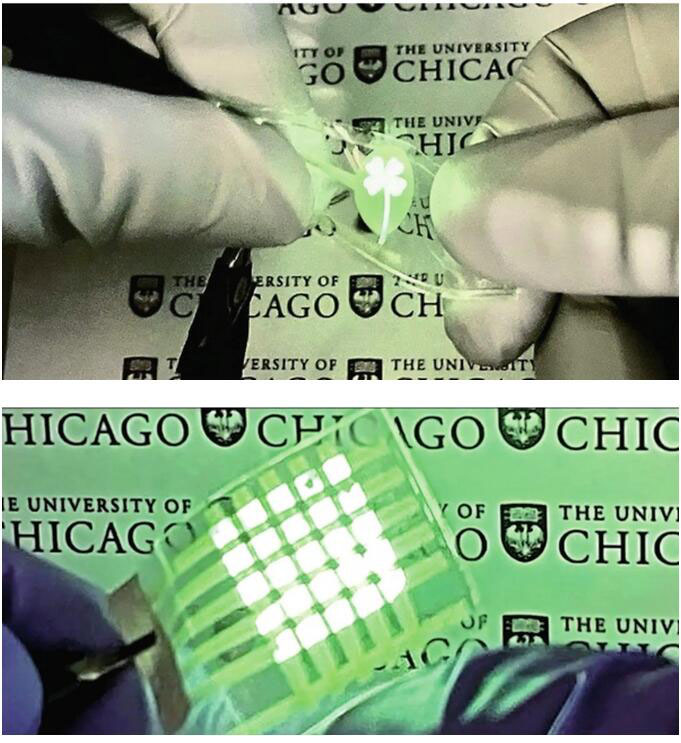New OLED displays that can be bent, stretched, and extended over a wide range are available
Imagine a thin digital display that is so flexible that you can wrap it around your wrist and fold it in any direction, or bend it over the steering wheel of your car. Researchers at the University of Chicago's Pritzker School of Molecular Engineering (PME) have designed just such a material, which can be bent in half or stretched to more than double its original length, while emitting a fluorescent pattern.
The material, described in the science journal Nature Materials, has a wide range of applications, from wearable electronics and health sensors to foldable computer screens. “One of the most important components of almost every consumer electronics we use today is the display,” said Sihong Wang, an assistant professor of molecular engineering who led the study with Juan de Pablo, a professor of molecular engineering. “We combined knowledge from many different fields to create a completely new display technology.”. De Pablo added: “This is the kind of material you need to eventually develop a really flexible screen. The work is really fundamental and I expect it to implement many technologies that we haven't even thought of yet.”
Most high-end smartphones and a growing number of TV screens use OLED, which organic light-emitting diode small organic molecules between conductors. When the current is switched on, the small molecules give off bright light. The technology is more energy-efficient than older LED and LCD displays and has been praised for its clear images. However, the molecular building blocks of oleds have tight chemical bonds and hard structures. “The materials currently used for these state-of-the-art OLED displays are very brittle; they don't have any extensibility,” Wang said. Our goal is to create a polymer that keeps OLED electroluminescent, but is stretchable.” Wang and De Pablo now know what it takes to inject stretchability into materials -- long polymers with flexible molecular chains, we also know what molecular structure is required for organic materials to emit light very efficiently. They set out to create new polymers that combine these two properties. “We've been able to develop atomic models of new polymers of interest, and with these models, we've simulated what happens when you pull these molecules and try to bend them. Now that we understand these properties at the molecular level, we have a framework to design new materials in which flexibility and luminescence are optimized.”
Having mastered the computational predictions of new flexible electroluminescent polymers, they built several prototypes. As the model predicts, these materials are flexible, stretchable, bright, durable and energy efficient. A key feature of their design is the use of“Thermally activated delayed fluorescence”, which allows the material to convert electrical energy into light in an efficient manner. This third-generation organic emitter mechanism can provide materials with the same performance as commercial OLED technology. Researchers have previously developed stretch-able neuromorphic chips that collect and analyze health data on a flexible band-aid. The ability to create stretchable displays now lends luster to the growing tool kit for the next generation of wearable electronics. Light-emitting flexible materials can be used not only to display information but also to integrate into wearable sensors that require light. For example, sensors that measure blood oxygen levels and heart rate often sense blood flow by shining light on blood vessels. Flexible luminescent materials could eventually be integrated into implantable devices, for example, devices that use light to control the activity of neurons in the brain (so-called optogenetics is currently used only in animal experiments to better understand the brain and brain diseases) . “My overall dream is to make all the basic components for a complete wearable electronics system, from sensing to processing to displaying information,” Wang explained, “Having this stretchable light-emitting material is another step toward that dream.” The team is planning to develop new display iterations in the future, incorporating more colors into the fluorescence and improving efficiency and performance, the goal is to eventually achieve the same level of performance as existing commercial technologies.
來源:新浪財經



